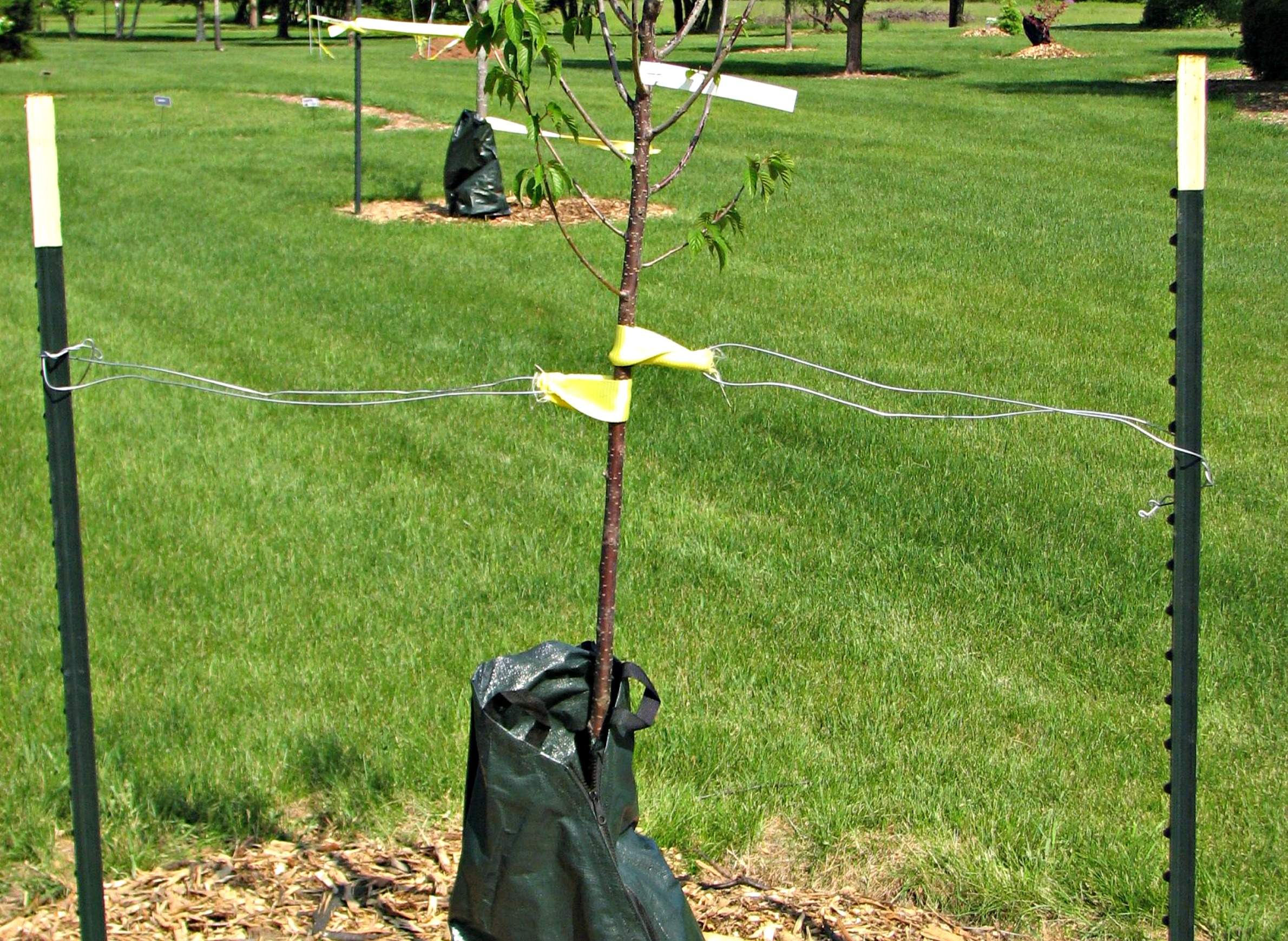
Watering bags can be used on newly planted trees to slowly release water to their roots.

Watering bags can be used on newly planted trees to slowly release water to their roots.
Healthy landscape plants need care and maintenance, especially when summer rainfall is inadequate. Plants can dissipate summer heat by transpiring water drawn from their roots to leaf tissues and finally releasing it into the air. Many landscape plants in the Upper Midwest transpire more water than their own body weight, even during normal summer temperature — daytime highs around 70-85 degrees Fahrenheit.
However, as air temperature rises above 85 degrees, water loss through transpiration doubles and the roots struggle to tap enough moisture to compensate the loss from leaf tissue. The resulting moisture stress condition leads plants to exhibit symptoms that include leaf scorch, curled leaves, early fall coloration, defoliation, twig dieback and temporary wilting.
Moisture stress condition can make the plant to become vulnerable to pest and disease attacks, as well as winter injuries. Certain landscapes, including those adjoining concrete driveways and roadsides, or facing the south/southwest sides of buildings, can be exposed to reflected radiated heat that could further intensify stress on plants.
Here are several ways to minimize the effects of summer heat and moisture stress on landscape plants:
University of Wisconsin-Extension Horticulture publishes detailed information about gardening and landscape plants, and local Extension offices can provide additional advice.
Vijai Pandian is a horticultural agent and educator for the University of Wisconsin-Extension Brown County. This article is adapted from an item originally published by the Green Bay Press Gazette.